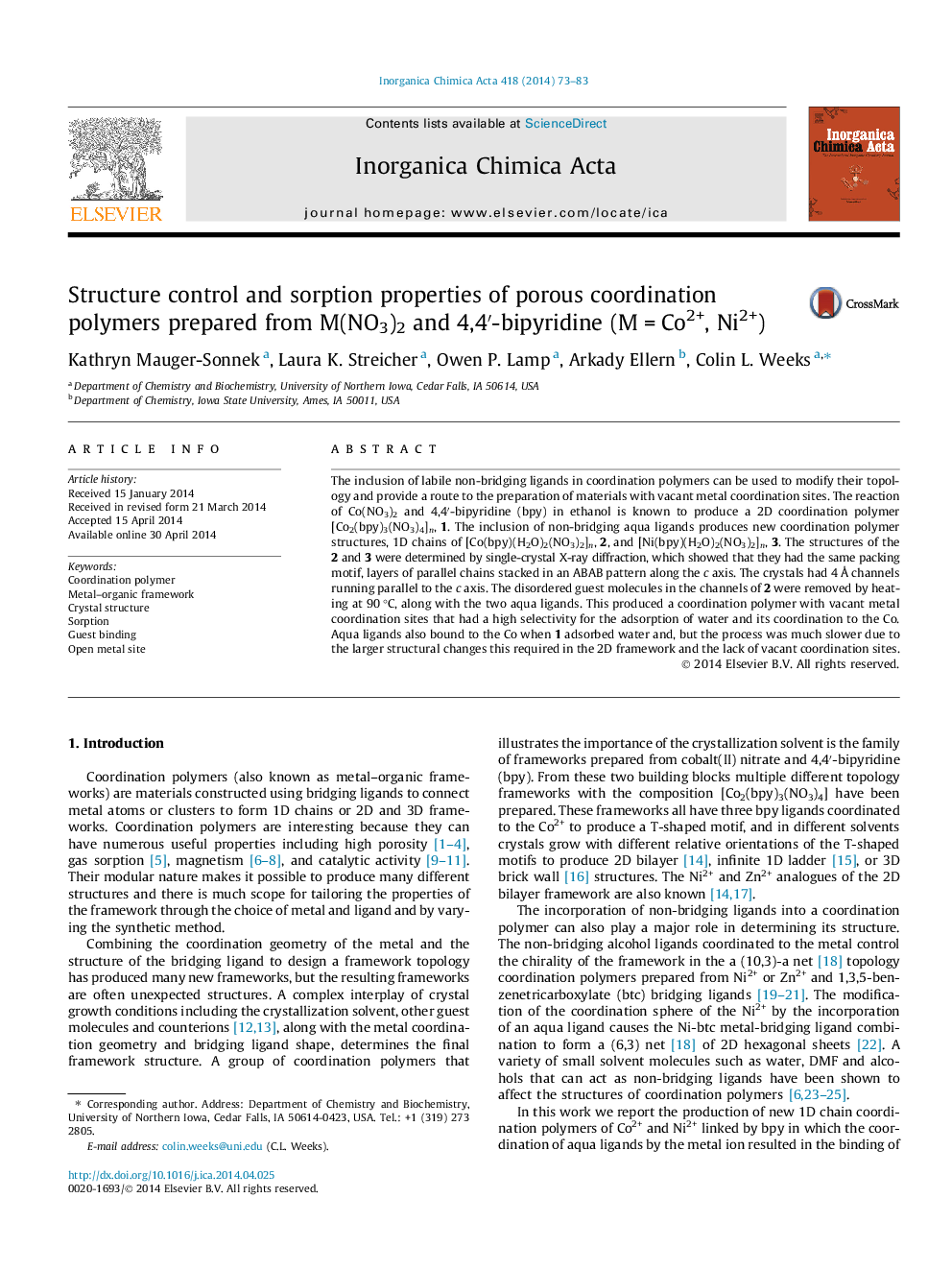| Article ID | Journal | Published Year | Pages | File Type |
|---|---|---|---|---|
| 1309807 | Inorganica Chimica Acta | 2014 | 11 Pages |
•New 1D chain coordination polymers prepared with porous structure.•Labile aqua ligands lead to materials with open metal sites.•Faster water binding by Co-bpy 1D chains than 2D bilayer due to open metal sites.
The inclusion of labile non-bridging ligands in coordination polymers can be used to modify their topology and provide a route to the preparation of materials with vacant metal coordination sites. The reaction of Co(NO3)2 and 4,4′-bipyridine (bpy) in ethanol is known to produce a 2D coordination polymer [Co2(bpy)3(NO3)4]n, 1. The inclusion of non-bridging aqua ligands produces new coordination polymer structures, 1D chains of [Co(bpy)(H2O)2(NO3)2]n, 2, and [Ni(bpy)(H2O)2(NO3)2]n, 3. The structures of the 2 and 3 were determined by single-crystal X-ray diffraction, which showed that they had the same packing motif, layers of parallel chains stacked in an ABAB pattern along the c axis. The crystals had 4 Å channels running parallel to the c axis. The disordered guest molecules in the channels of 2 were removed by heating at 90 °C, along with the two aqua ligands. This produced a coordination polymer with vacant metal coordination sites that had a high selectivity for the adsorption of water and its coordination to the Co. Aqua ligands also bound to the Co when 1 adsorbed water and, but the process was much slower due to the larger structural changes this required in the 2D framework and the lack of vacant coordination sites.
Graphical abstractLabile non-bridging ligands modify coordination polymer structure and provide a route to the preparation of materials with vacant metal coordination sites.Figure optionsDownload full-size imageDownload as PowerPoint slide
